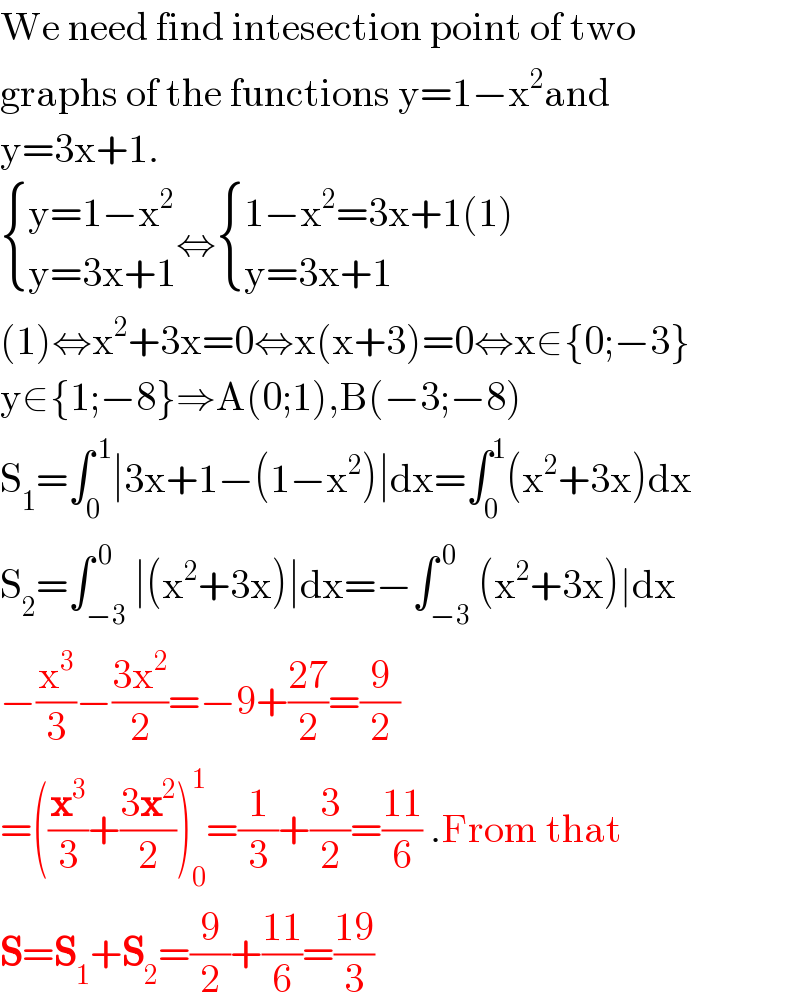
Question and Answers Forum
Question Number 109674 by I want to learn more last updated on 24/Aug/20

Answered by bobhans last updated on 25/Aug/20
![((⋰♭o♭⋰)/(hans)) Area 1 = ∫_0 ^1 (1+3x)−(1−x^2 )dx = ∫_0 ^1 (3x+x^2 )dx=[(3/2)x^2 +(1/3)x^3 ]_0 ^1 = (3/2)+(1/3)=((11)/6) Area 2 = ((Δ(√Δ))/(6a^2 ))= ((9(√9))/(6.1))=((9.3)/6)=((27)/6) where 1+3x=1−x^2 ⇒x^2 +3x=0; Δ=9−4.1.0=9 Totally area =((11+27)/6)=((38)/6)](Q109681.png)
Commented by I want to learn more last updated on 25/Aug/20

Answered by 1549442205PVT last updated on 25/Aug/20

Commented by I want to learn more last updated on 25/Aug/20

Commented by 1549442205PVT last updated on 25/Aug/20

